Visegrád is a small castle town, chronicled from the turn of the first millennium, in Pest County, Hungary, north of Budapest on the right bank of the Danube in the Danube Bend. Visegrád is known for the remains of the Early Renaissance summer palace of King Matthias Corvinus of Hungary and the medieval citadel.
The name Visegrád is of Slavic origin, meaning acropolis, literary "the upper castle" (the castle with a privileged position) or "the upper settlement". The castle of Visegrád is called Fellegvár (Citadel) in Hungarian. In German, the town is called Plintenburg. The German name Plintenburg or Blendenburg is said to come from the beautiful view that one has from the castle - "blinded"/"dazzled" by this view.
After a short drive along the Danube from last night's lodging (Leányfalu), we park and approach the citadel, crossing under an outer gate.
The name Visegrád is of Slavic origin, meaning acropolis, literary "the upper castle" (the castle with a privileged position) or "the upper settlement". The castle of Visegrád is called Fellegvár (Citadel) in Hungarian. In German, the town is called Plintenburg. The German name Plintenburg or Blendenburg is said to come from the beautiful view that one has from the castle - "blinded"/"dazzled" by this view.
After a short drive along the Danube from last night's lodging (Leányfalu), we park and approach the citadel, crossing under an outer gate.
Tim is dazzled by the views.
We ascend to the upper castle.
Here's a photo of a photo from a posting just inside the entrance in the tower at the top of the outside stairs.
A castle indeed high on a hill.
Above photo by Szvitek Péter, Hungary - Indafotó, CC BY 2.5 hu, free-use license at Wikipedia "Visegrád". No changes were made.
A feast is underway...
A trebuchet replica, used for castle sieges.
Peering through windows of the past...
Now after another short drive further up the Danube, we're at "The Primatial Basilica of the Assumption of the Blessed Virgin Mary and St Adalbert" or Esztergom Basilica. The church completed 1869 sits on the grounds of a first church built in the 11th century, now long gone. The church does contain elements from earlier centuries however.
The huge crypt, built in Old Egyptian style is the resting place of archbishops, and others - large among them is Cardinal József Mindszenty, famous for his opposition to both Nazi and Communist rule.
Now in the main church...very impressive.
Famous historical structures of Hungary - we're at the center top of this relief map, on the Danube.
The complex was huge at one time - can't say why it evolved (devolved?), other than time moves on.
View of the Danube from an upper space, with a cafe.
Restoration continues...



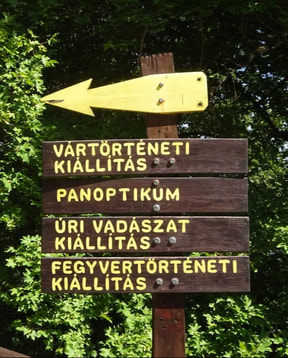

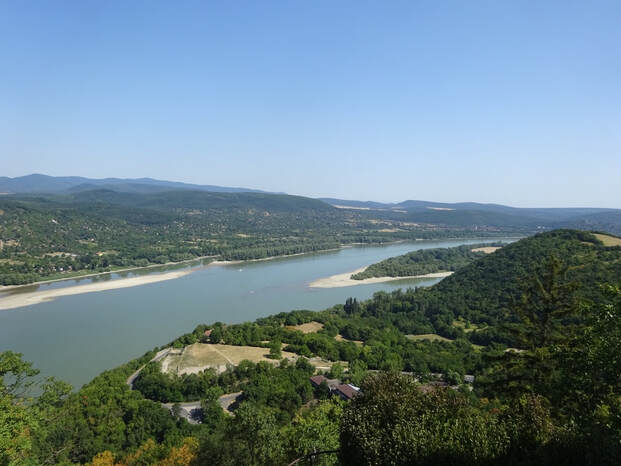











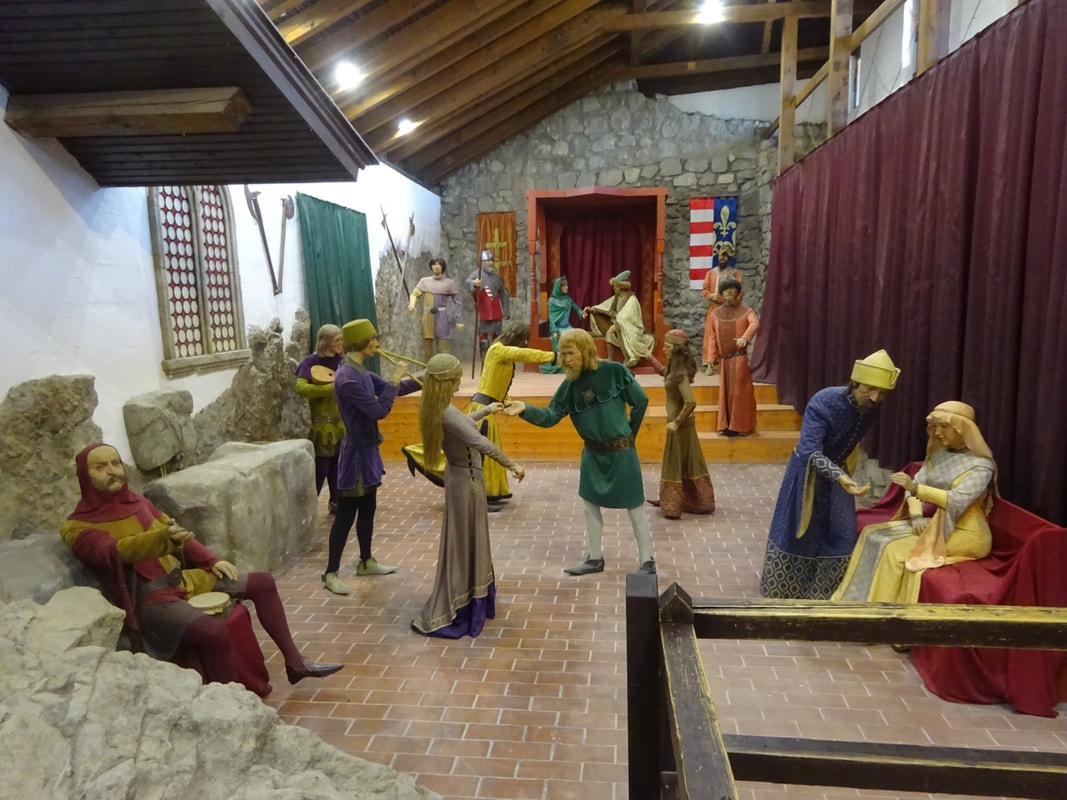

























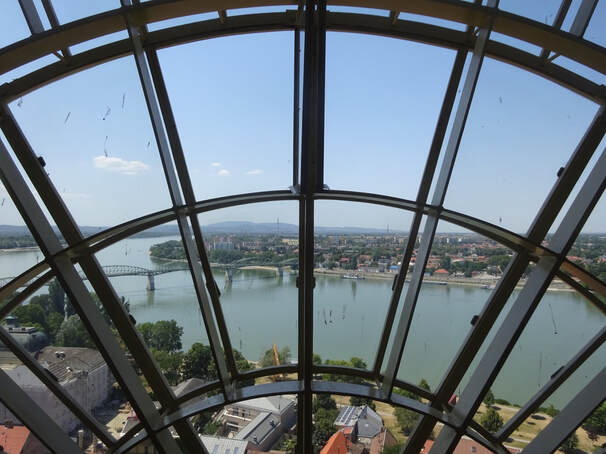

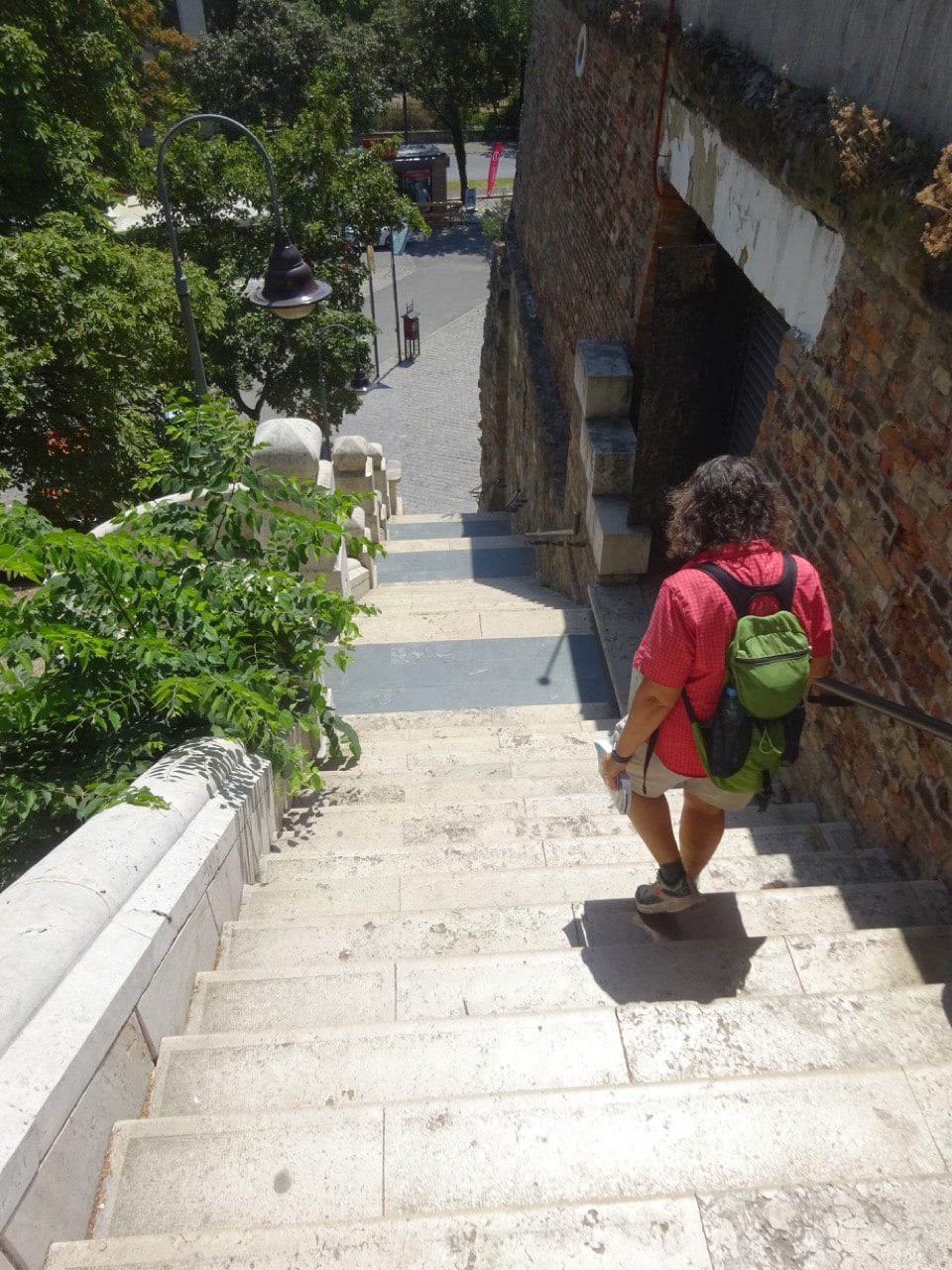


 RSS Feed
RSS Feed
